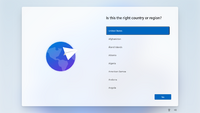Main Page
Welcome to BetaWiki!
An open encyclopedia of software history
Did you know...
- ...that Windows Vista build 5000 (vbl_core.040803-2000) was compiled earlier than the official development reset build?
- ...that Windows 1.0 and Windows 2.x have a hidden Easter egg with a list of members of the Windows team?
- ...that official support for running Windows NT on Power Macintosh computers was in development?
- ...that there was an E variant planned for Windows 7 in addition to K, N and KN, which didn't include Internet Explorer?
- ...that the IA-64 compile of Windows Server 2003 build 2462 includes login banners for a Personal edition of Windows 2000?
- ...that every Classic Mac OS version since Mac OS 7 renames the "Special" menu to a unique word beginning with S in beta builds for easy identification?
Featured article
The Out-of-box experience (OOBE), sometimes referred to as the First Time Setup, is a setup wizard related to Windows, macOS, and other operating systems which launches after the user installs/resets the OS. The OOBE allows the user of the computer to setup their account, choose their keyboard layouts, and other important information the OS requires.In most Windows NT-based systems, the files for the "Microsoft Out-of-box experience" are located in the oobe directory in %WinDir%\System32, with the main file being msoobe.exe. OOBEs are generally customized by OEMs to set up particular settings the user may be allowed to change and/or offer additional options to select or applications to be run. Starting from Windows XP, an OOBE would be made available in retail releases.
